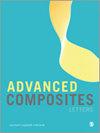End-of-Life Alternatives of Glass Reinforced Polyester Boat Hulls Compared by LCA
IF 2.1
4区 材料科学
Q3 MATERIALS SCIENCE, COMPOSITES
引用次数: 14
Abstract
Glass reinforced polyester (GRP), as a thermoset polymer composites, dominates boat building industry with its several advantages such as high strength/weight ratio, cohesiveness, good resistance to environment. However, proper recovering and recycling of GRP boats is became a current environmental requirement that should be met by the related industry. In this study, to propose in a cost effective and environmentally friendly way, Life Cycle Assessment (LCA) has been carried out for six scenarios include two moulding methods (namely Hand Lay-up Method, HLM and Vacuum Infusion Method, VIM) and three End-of-Life (EoL) alternatives(namely Extruding, Incineration and Landfill) for a recreational boat's GRP hulls. A case study from raw materials purchasing phase to disposal/recycling stages has been established taking 11 m length GRP boat hull as the functional unit. Analysis show that in the production phase, the impacts are mainly due to the use of energy (electricity), transport and raw material manufacture. Largest differences between the methods considered (HLM and VIM) can be observed in the factors of marine aquatic ecotoxicity and eutrophication while the closest ones are abiotic depletion, ozon layer depletion and photochemical oxidation. The environmental impact of VIM is much higher than HLM due to its higher energy consumption while vacuum infusion method has lower risk than hand lay-up method in terms of occupational health by using less raw material (resin) in a closed mold. In the comparison of the three EoL techniques, the mechanical way of recycling (granule extruding) shows better environmental impacts except terrestrial ecotoxicity, photochemical oxidation and acidification. Among the EoL alternatives, landfill has the highest environmental impacts except ‘global warming potential’ and ‘human toxicity’ which are the highest in extrusion. The main cause of the impacts of landfill is the transportation needs between the EoL boats and the licenced landfill site. Although it has the higher impact on human toxicity, incineration is the second cleaner alternative of EoL techniques considered in this study. In fact that the similar trend has been observed both in production and EoL phases of the boat. It is obvious that using much more renewable energy mix and greener transportation alternative can reduce the overall impact of the all phases considerably.用生命周期评价法比较玻璃纤维增强聚酯船体的使用寿命
玻璃纤维增强聚酯(GRP)作为一种热固性聚合物复合材料,以其高强度/重量比、内聚性和良好的耐环境性等优点在造船工业中占据主导地位。然而,玻璃钢船的适当回收和回收已成为相关行业应满足的当前环境要求。在本研究中,为了以经济高效和环保的方式提出建议,对六种情况进行了生命周期评估(LCA),包括两种成型方法(即手工叠层法、HLM和真空灌注法、VIM)和三种娱乐船玻璃钢船体的寿命终止(EoL)替代方案(即挤压、焚烧和填埋)。以11米长的玻璃钢船体为功能单元,建立了从原材料采购阶段到处理/回收阶段的案例研究。分析表明,在生产阶段,影响主要是由于能源(电力)的使用、运输和原材料制造。所考虑的方法(HLM和VIM)在海洋水生生物生态毒性和富营养化的因素方面存在最大差异,而最接近的因素是非生物耗竭、臭氧层耗竭和光化学氧化。VIM由于其较高的能耗而对环境的影响远高于HLM,而真空灌注法由于在闭合模具中使用较少的原材料(树脂)而在职业健康方面比手工上篮法具有较低的风险。在三种EoL技术的比较中,除陆地生态毒性、光化学氧化和酸化外,机械回收方式(颗粒挤出)表现出更好的环境影响。在EoL替代品中,除了“全球变暖潜力”和“人类毒性”外,垃圾填埋场对环境的影响最大,这两种物质在挤压过程中最高。垃圾填埋场影响的主要原因是EoL船和获得许可的垃圾填埋场之间的运输需求。尽管焚烧对人体毒性的影响更大,但它是本研究中考虑的EoL技术的第二种更清洁的替代方案。事实上,在该船的生产和EoL阶段都观察到了类似的趋势。很明显,使用更多的可再生能源组合和更环保的交通替代方案可以大大减少所有阶段的总体影响。
本文章由计算机程序翻译,如有差异,请以英文原文为准。
求助全文
约1分钟内获得全文
求助全文
来源期刊

Advanced Composites Letters
工程技术-材料科学:复合
自引率
0.00%
发文量
0
审稿时长
4.2 months
期刊介绍:
Advanced Composites Letters is a peer reviewed, open access journal publishing research which focuses on the field of science and engineering of advanced composite materials or structures.
 求助内容:
求助内容: 应助结果提醒方式:
应助结果提醒方式:


